Attribution Modelling for Google Analytics: Channels that Convert Versus Channels that Don’t
Loves Data
Your website visitors come from all sorts of different places: search engines, display ads, links in your email campaigns, and so on. You probably want to know how each of these means of acquisition are working for your site. Your visitors might visit multiple times before buying your products or doing whatever else it is that you want from them, so identifying which acquisition source drove each sale isn’t always that simple. Welcome to the wonderful world of attribution.
The Problem
Let’s say someone clicked through from channel A, then from channel B, then channel A again, then channel C, then finally made a purchase. So do you attribute that purchase to channel A, because it first brought them to your site, or channel C because that was when they ultimately converted, or some combination of A, B and C?
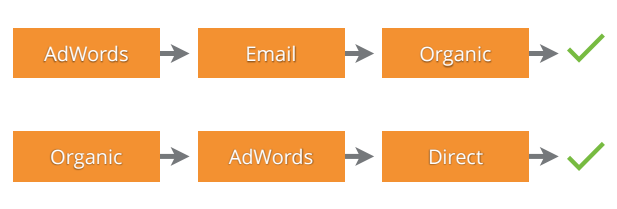
Why it Matters
Attributing your sales or other goal completions correctly is vital because you’re spending money on Google AdWords campaigns, EDMs, social promotions, and you need to know that these are working effectively and making a positive return on investment (ROI). If you can’t say that your Google AdWords campaigns are delivering more benefit to your business than you are spending on them, you need to either stop running those campaigns or change your campaign strategy. However, if you’re not properly attributing sales to the right channel, you can’t make these critical business decisions in an insightful way.
Default Attribution
Take a standard report in Google Analytics, such as a channel or source / medium report. Google Analytics provides quick access to these basic reports which set out each channel, how much traffic they brought to your site and how many conversions (sales etc.) they generated. It’s important to understand that the number of conversions is just for the sessions shown and says nothing about what the user journey was up to that point. Using these numbers to say how well each channel is doing is very tempting, because the numbers are so readily available, but only worthwhile if you really have reason to believe that the so-called ‘last click’ is the most meaningful way to attribute sales for your business.
Multi-channel Attribution
The good news is that Google Analytics has built-in functionality to help you look at the bigger picture. The Multi-channel funnel reports can look back up to 90 days to show the paths that users took before converting, which channels may have helped in making sales that were ultimately converted from another channel, and how much value each channel brought when considered in the round.
Getting to grips with these reports can be daunting, but getting some value from them is not as hard as it seems. First of all, consider the Top Conversion Paths report. This should quickly help you get a feel for which channels (or medium, or other dimension) are sitting at the beginning, the middle and end of the conversion path. So, straight away, if you thought that your Google AdWords campaigns were not delivering value but you are seeing the channel appear in many of the top paths, perhaps you shouldn’t worry too much about the channel after all.
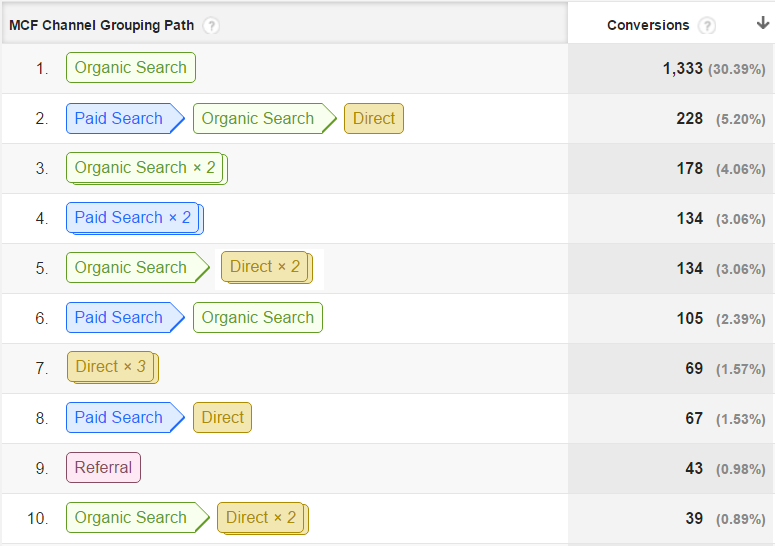
Next, look at the Assisted Conversions report. Here, you’ll see the sales figures for each channel at the end of the user journey (‘last click’) and also, and far more interestingly, figures for sales where the channel sat somewhere along the journey. These are the sales where a channel may have helped plant the idea of a sale in your customer’s mind, brought them to the site, maybe even taken them into the purchase funnel, but without making a sale on that occasion. The next question is the million-dollar question of attribution: how much of the final sale should you say was a result of that channel?
Attribution Models
There is no one true way to attribute sales across the various channels that contributed. But to start with, you can compare different models in Google Analytics' Model Comparison reports.
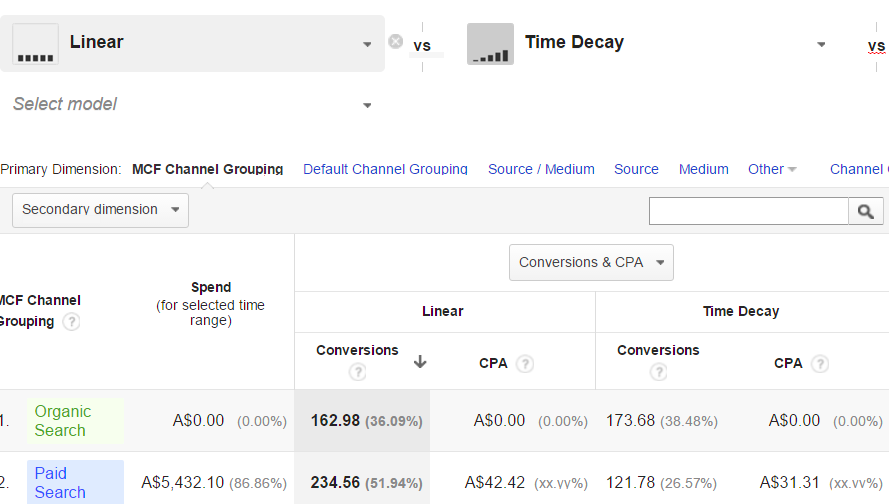
Here, you can look at different models, from the simple:

… to the more complicated:
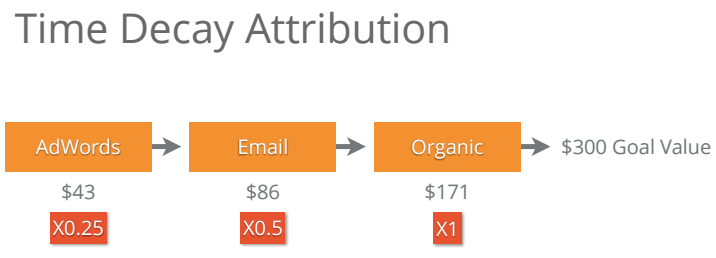
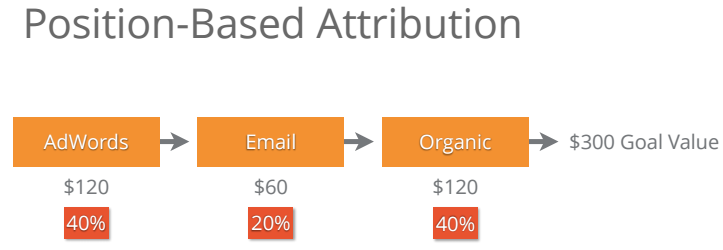
Going further, you can even create your own attribution model that is tailored for the way your business works.
There are many ways you can distribute credit across marketing channels and there are just as many attribution models. Choosing which model to use is important because this model will help you make decisions about your future marketing spend. Hopefully you now know how to use Google Analytics' built-in reports to help you along the exciting journey of attribution. Remember, though, that good attribution modelling is not a one off activity but an ongoing process of optimising the effectiveness and efficiency of your marketing efforts.
Good luck, and let us know your thoughts in the comments below.

Comments